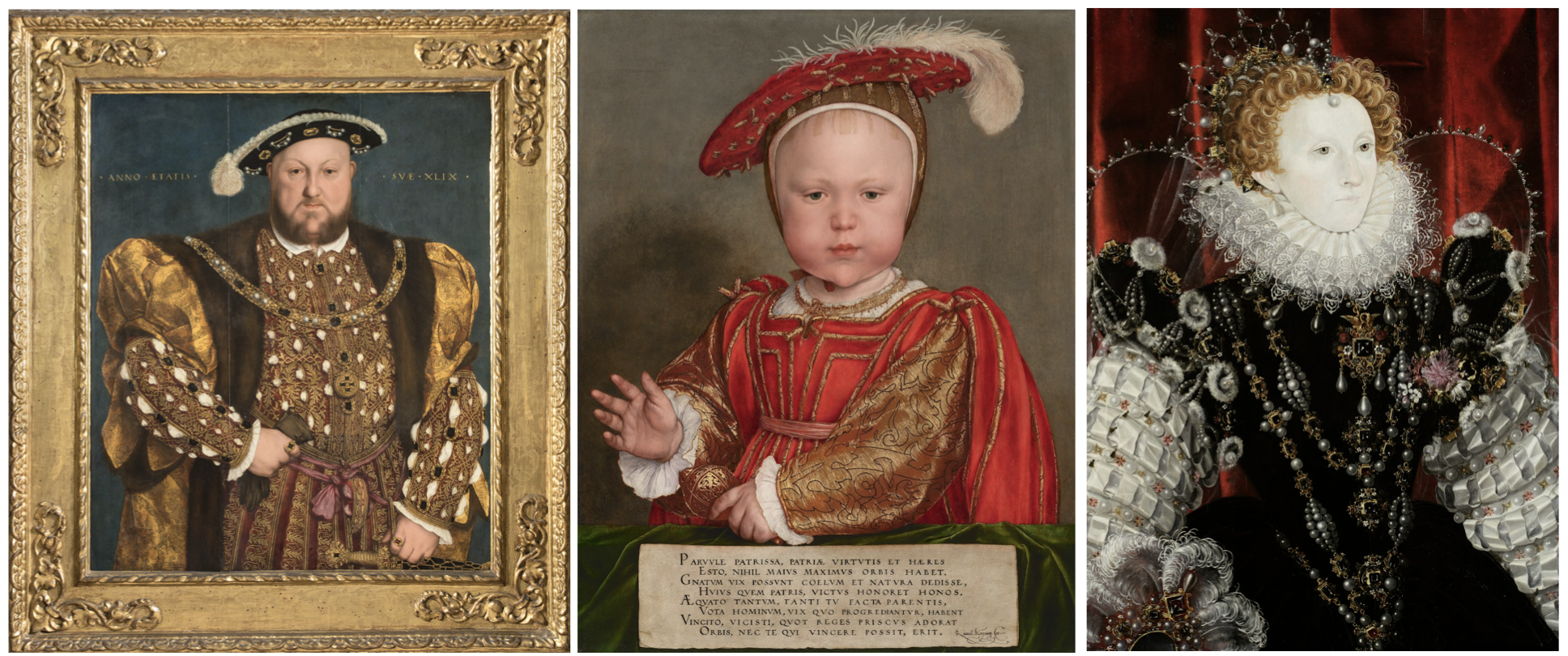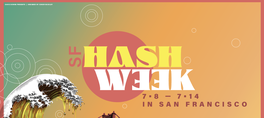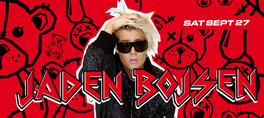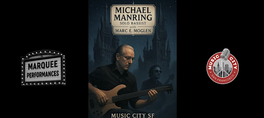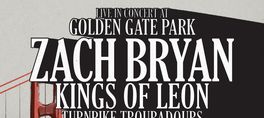"Thanks to Hollywood movies and TV dramas like The Tudors, many Americans have heard of King Henry VIII and his six wives, as well as the "Virgin Queen" Elizabeth I, but few may be aware of the distinctive art and visual propaganda that was central to the splendor and drama of the Tudor court," said Thomas P. Campbell, Director and CEO of the Fine Arts Museums of San Francisco. "Now, in the first exhibition of its kind in the US, The Tudors: Art and Majesty in Renaissance England reunites scores of sumptuous paintings, precious jewels, gilded tapestries and rare artifacts from collections around the world to bring the Tudor dynasty vividly to life-from the bloody founding of the dynasty in 1485 by Henry VII on the fields of Bosworth, to the final moments of Queen Elizabeth in 1603."
While the Tudor period was marked by political and religious strife, under the patronage of Henry VII and his successors, the arts flourished in England. The exhibition traces the development of art across the reigns of the five Tudor monarchs: Henry VII (reigned 1485-1509), his son Henry VIII (1509-1547), and Henry VIII's three children Edward VI (r. 1547-15 53), Mary I (r. 1553-1558), and Elizabeth I (r.1558-1603). Works by Florentine sculptors, German painters, Flemish weavers, and European goldsmiths and printers from this period are presented alongside objects made by English artists and craftspeople, demonstrating both the cosmopolitanism of the English court and the emergence of distinctly English artistic styles by the end of the sixteenth century.
"The Tudors ushered in the English Renaissance, which drew inspiration from humanism, antiquity, and observation of the natural world," said Martin Chapman, Curator in Charge of European Decorative Arts and Sculpture at the Fine Arts Museums of San Francisco. "Unique to the presentation at the Legion of Honor are a portrait of Henry VIII by Hans Holbein the Younger from the Palazzo Barberini in Rome and a portrait of Elizabeth I by Nicholas Hilliard from a private collection in England, works by two of the most significant painters patronized by the Tudors."
The Tudors: Art and Majesty in Renaissance England will examine the Tudors' use of art to project an image of regal splendor and authority. Organized chronologically, the exhibition will trace the development of artistic production through the succession of Tudor monarchs.
Henry VII founded the Tudor dynasty when he seized the crown, concluding the Wars of the Roses. The dynasty was strengthened through the cultivation of European alliances by means of marriage, including Henry VII's marriage to Elizabeth of York (ending the rivalry between the royal houses of Lancaster and York), and after his death, his son Henry VIII's marriage to Spanish princess Catherine of Aragon, and his two daughters' marriages to the kings of Scotland and France. Throughout his reign Henry VII invested in art as a means of projecting kingly splendor. A velvet and cloth-of-gold clerical vestment, or cope, commissioned for his chapel, is among the most splendid textiles in the exhibition.
Henry VIII, who inherited a full treasury upon his succession, built numerous palaces and supported scholars and artists such as German painter Hans Holbein the Younger, one of the most successful portraitists and designers of the sixteenth century. In response to the pope's refusal to grant him a divorce from Catherine of Aragon, Henry severed England's ties to the Roman Catholic Church in 1534, establishing the Church of England with the monarch as its head. This was followed by widespread destruction of England's powerful monasteries and abbeys. Key objects in the section of the exhibition devoted to Henry VIII's reign include a Hans Holbein portrait of Henry VIII's third wife Jane Seymour; the king's armor garniture from the Royal Armoury at Greenwich; and a portrait bust of Bishop John Fisher, an influential English clergyman, by the Italian sculptor Pietro Torrigiano.
The reign of boy-king Edward VI brought the development of more radical Protestantism in England, including the publication of the Book of Common Prayer in 1549. During the brief reign of Edward's sister Mary I, England was reconciled with the Roman Catholic Church and more than 280 Protestants were burned at the stake for heresy. Highlights of a section devoted to this time period include a Holbein portrait of Edward as a child and Henry's longed-for heir, a portrait of Edward as king by William Scrots, and a portrait medal depicting Mary I in profile.
Under Elizabeth I, whose reign would be remembered as a golden age, distinctively English styles of painting, architecture, and decorative arts emerged. Known variously as the Virgin Queen, Good Queen Bess, and Gloriana, her rule was marked by Protestant religious policies, economic prosperity, pirating of Spanish ships in the Americas, and the maturation of English art and culture, like the sonnets and plays of William Shakespeare. Among the many notable works from her reign in the exhibition are the recognizable Hardwick Portrait (ca. 1590-1599) and the Heneage Jewel, one of the most splendid surviving Elizabethan jewels depicting the queen in profile and Noah's ark weathering stormy seas.
The exhibition will also include tapestries commissioned or acquired by Henry VII and Henry VIII. Tapestries were the glory of the Tudor palaces, adorning the walls with vibrant jewel tones and the glint of gilt thread. A Flemish tapestry depicting a scene from the story of David and Bathsheba further demonstrates the cosmopolitan taste and sophistication of Henry VIII's court, while the subject of David may reflect a desire to be associated with the biblical king.
The Tudors: Art and Majesty in Renaissance England will be on view from June 24 through September 24, 2023, at the Legion of Honor museum in San Francisco. The Legion of Honor's presentation is organized by Martin Chapman, Curator in Charge of European Decorative Arts and Sculpture at the Fine Arts Museums of San Francisco, with the assistance of Thomas Wu, Assistant Curator of European Decorative Arts and Sculpture.
Image credits:
Hans Holbein the Younger (German, 1497-1543) Portrait of Henry VIII, 1540, Oil on wood, 88.5X 74.5 cm, Palazzo Barberini, courtesy of the Gallerie Nazionali di Arte Anti ca, Rome (MIC) - Biblioteca Hertziana, Isti tuto Max Planckper la storia dell'arte/Enrico Fontolan.
"Edward VI as a Child", Artist: Hans Holbein the Younger (German, 1497/1498 - 1543), probably 1538, Oil on wood, Framed: 31 1/2 x 27 x 4 in. (80.01 x 68.58 x 10.16 cm), 22 3/8 x 17 5/16 in. (56.833 x 43.974 cm), National Gallery of Art, Washington, Andrew W. Mellon Collection, 1937.1.64, Courtesy National Gallery of Art, Washington.
Associated with Nicholas Hilliard," Queen Elizabeth I", c. 1575; National Portrait Gallery, London © National Portrait Gallery, London.
show less
While the Tudor period was marked by political and religious strife, under the patronage of Henry VII and his successors, the arts flourished in England. The exhibition traces the development of art across the reigns of the five Tudor monarchs: Henry VII (reigned 1485-1509), his son Henry VIII (1509-1547), and Henry VIII's three children Edward VI (r. 1547-15 53), Mary I (r. 1553-1558), and Elizabeth I (r.1558-1603). Works by Florentine sculptors, German painters, Flemish weavers, and European goldsmiths and printers from this period are presented alongside objects made by English artists and craftspeople, demonstrating both the cosmopolitanism of the English court and the emergence of distinctly English artistic styles by the end of the sixteenth century.
"The Tudors ushered in the English Renaissance, which drew inspiration from humanism, antiquity, and observation of the natural world," said Martin Chapman, Curator in Charge of European Decorative Arts and Sculpture at the Fine Arts Museums of San Francisco. "Unique to the presentation at the Legion of Honor are a portrait of Henry VIII by Hans Holbein the Younger from the Palazzo Barberini in Rome and a portrait of Elizabeth I by Nicholas Hilliard from a private collection in England, works by two of the most significant painters patronized by the Tudors."
The Tudors: Art and Majesty in Renaissance England will examine the Tudors' use of art to project an image of regal splendor and authority. Organized chronologically, the exhibition will trace the development of artistic production through the succession of Tudor monarchs.
Henry VII founded the Tudor dynasty when he seized the crown, concluding the Wars of the Roses. The dynasty was strengthened through the cultivation of European alliances by means of marriage, including Henry VII's marriage to Elizabeth of York (ending the rivalry between the royal houses of Lancaster and York), and after his death, his son Henry VIII's marriage to Spanish princess Catherine of Aragon, and his two daughters' marriages to the kings of Scotland and France. Throughout his reign Henry VII invested in art as a means of projecting kingly splendor. A velvet and cloth-of-gold clerical vestment, or cope, commissioned for his chapel, is among the most splendid textiles in the exhibition.
Henry VIII, who inherited a full treasury upon his succession, built numerous palaces and supported scholars and artists such as German painter Hans Holbein the Younger, one of the most successful portraitists and designers of the sixteenth century. In response to the pope's refusal to grant him a divorce from Catherine of Aragon, Henry severed England's ties to the Roman Catholic Church in 1534, establishing the Church of England with the monarch as its head. This was followed by widespread destruction of England's powerful monasteries and abbeys. Key objects in the section of the exhibition devoted to Henry VIII's reign include a Hans Holbein portrait of Henry VIII's third wife Jane Seymour; the king's armor garniture from the Royal Armoury at Greenwich; and a portrait bust of Bishop John Fisher, an influential English clergyman, by the Italian sculptor Pietro Torrigiano.
The reign of boy-king Edward VI brought the development of more radical Protestantism in England, including the publication of the Book of Common Prayer in 1549. During the brief reign of Edward's sister Mary I, England was reconciled with the Roman Catholic Church and more than 280 Protestants were burned at the stake for heresy. Highlights of a section devoted to this time period include a Holbein portrait of Edward as a child and Henry's longed-for heir, a portrait of Edward as king by William Scrots, and a portrait medal depicting Mary I in profile.
Under Elizabeth I, whose reign would be remembered as a golden age, distinctively English styles of painting, architecture, and decorative arts emerged. Known variously as the Virgin Queen, Good Queen Bess, and Gloriana, her rule was marked by Protestant religious policies, economic prosperity, pirating of Spanish ships in the Americas, and the maturation of English art and culture, like the sonnets and plays of William Shakespeare. Among the many notable works from her reign in the exhibition are the recognizable Hardwick Portrait (ca. 1590-1599) and the Heneage Jewel, one of the most splendid surviving Elizabethan jewels depicting the queen in profile and Noah's ark weathering stormy seas.
The exhibition will also include tapestries commissioned or acquired by Henry VII and Henry VIII. Tapestries were the glory of the Tudor palaces, adorning the walls with vibrant jewel tones and the glint of gilt thread. A Flemish tapestry depicting a scene from the story of David and Bathsheba further demonstrates the cosmopolitan taste and sophistication of Henry VIII's court, while the subject of David may reflect a desire to be associated with the biblical king.
The Tudors: Art and Majesty in Renaissance England will be on view from June 24 through September 24, 2023, at the Legion of Honor museum in San Francisco. The Legion of Honor's presentation is organized by Martin Chapman, Curator in Charge of European Decorative Arts and Sculpture at the Fine Arts Museums of San Francisco, with the assistance of Thomas Wu, Assistant Curator of European Decorative Arts and Sculpture.
Image credits:
Hans Holbein the Younger (German, 1497-1543) Portrait of Henry VIII, 1540, Oil on wood, 88.5X 74.5 cm, Palazzo Barberini, courtesy of the Gallerie Nazionali di Arte Anti ca, Rome (MIC) - Biblioteca Hertziana, Isti tuto Max Planckper la storia dell'arte/Enrico Fontolan.
"Edward VI as a Child", Artist: Hans Holbein the Younger (German, 1497/1498 - 1543), probably 1538, Oil on wood, Framed: 31 1/2 x 27 x 4 in. (80.01 x 68.58 x 10.16 cm), 22 3/8 x 17 5/16 in. (56.833 x 43.974 cm), National Gallery of Art, Washington, Andrew W. Mellon Collection, 1937.1.64, Courtesy National Gallery of Art, Washington.
Associated with Nicholas Hilliard," Queen Elizabeth I", c. 1575; National Portrait Gallery, London © National Portrait Gallery, London.
"Thanks to Hollywood movies and TV dramas like The Tudors, many Americans have heard of King Henry VIII and his six wives, as well as the "Virgin Queen" Elizabeth I, but few may be aware of the distinctive art and visual propaganda that was central to the splendor and drama of the Tudor court," said Thomas P. Campbell, Director and CEO of the Fine Arts Museums of San Francisco. "Now, in the first exhibition of its kind in the US, The Tudors: Art and Majesty in Renaissance England reunites scores of sumptuous paintings, precious jewels, gilded tapestries and rare artifacts from collections around the world to bring the Tudor dynasty vividly to life-from the bloody founding of the dynasty in 1485 by Henry VII on the fields of Bosworth, to the final moments of Queen Elizabeth in 1603."
While the Tudor period was marked by political and religious strife, under the patronage of Henry VII and his successors, the arts flourished in England. The exhibition traces the development of art across the reigns of the five Tudor monarchs: Henry VII (reigned 1485-1509), his son Henry VIII (1509-1547), and Henry VIII's three children Edward VI (r. 1547-15 53), Mary I (r. 1553-1558), and Elizabeth I (r.1558-1603). Works by Florentine sculptors, German painters, Flemish weavers, and European goldsmiths and printers from this period are presented alongside objects made by English artists and craftspeople, demonstrating both the cosmopolitanism of the English court and the emergence of distinctly English artistic styles by the end of the sixteenth century.
"The Tudors ushered in the English Renaissance, which drew inspiration from humanism, antiquity, and observation of the natural world," said Martin Chapman, Curator in Charge of European Decorative Arts and Sculpture at the Fine Arts Museums of San Francisco. "Unique to the presentation at the Legion of Honor are a portrait of Henry VIII by Hans Holbein the Younger from the Palazzo Barberini in Rome and a portrait of Elizabeth I by Nicholas Hilliard from a private collection in England, works by two of the most significant painters patronized by the Tudors."
The Tudors: Art and Majesty in Renaissance England will examine the Tudors' use of art to project an image of regal splendor and authority. Organized chronologically, the exhibition will trace the development of artistic production through the succession of Tudor monarchs.
Henry VII founded the Tudor dynasty when he seized the crown, concluding the Wars of the Roses. The dynasty was strengthened through the cultivation of European alliances by means of marriage, including Henry VII's marriage to Elizabeth of York (ending the rivalry between the royal houses of Lancaster and York), and after his death, his son Henry VIII's marriage to Spanish princess Catherine of Aragon, and his two daughters' marriages to the kings of Scotland and France. Throughout his reign Henry VII invested in art as a means of projecting kingly splendor. A velvet and cloth-of-gold clerical vestment, or cope, commissioned for his chapel, is among the most splendid textiles in the exhibition.
Henry VIII, who inherited a full treasury upon his succession, built numerous palaces and supported scholars and artists such as German painter Hans Holbein the Younger, one of the most successful portraitists and designers of the sixteenth century. In response to the pope's refusal to grant him a divorce from Catherine of Aragon, Henry severed England's ties to the Roman Catholic Church in 1534, establishing the Church of England with the monarch as its head. This was followed by widespread destruction of England's powerful monasteries and abbeys. Key objects in the section of the exhibition devoted to Henry VIII's reign include a Hans Holbein portrait of Henry VIII's third wife Jane Seymour; the king's armor garniture from the Royal Armoury at Greenwich; and a portrait bust of Bishop John Fisher, an influential English clergyman, by the Italian sculptor Pietro Torrigiano.
The reign of boy-king Edward VI brought the development of more radical Protestantism in England, including the publication of the Book of Common Prayer in 1549. During the brief reign of Edward's sister Mary I, England was reconciled with the Roman Catholic Church and more than 280 Protestants were burned at the stake for heresy. Highlights of a section devoted to this time period include a Holbein portrait of Edward as a child and Henry's longed-for heir, a portrait of Edward as king by William Scrots, and a portrait medal depicting Mary I in profile.
Under Elizabeth I, whose reign would be remembered as a golden age, distinctively English styles of painting, architecture, and decorative arts emerged. Known variously as the Virgin Queen, Good Queen Bess, and Gloriana, her rule was marked by Protestant religious policies, economic prosperity, pirating of Spanish ships in the Americas, and the maturation of English art and culture, like the sonnets and plays of William Shakespeare. Among the many notable works from her reign in the exhibition are the recognizable Hardwick Portrait (ca. 1590-1599) and the Heneage Jewel, one of the most splendid surviving Elizabethan jewels depicting the queen in profile and Noah's ark weathering stormy seas.
The exhibition will also include tapestries commissioned or acquired by Henry VII and Henry VIII. Tapestries were the glory of the Tudor palaces, adorning the walls with vibrant jewel tones and the glint of gilt thread. A Flemish tapestry depicting a scene from the story of David and Bathsheba further demonstrates the cosmopolitan taste and sophistication of Henry VIII's court, while the subject of David may reflect a desire to be associated with the biblical king.
The Tudors: Art and Majesty in Renaissance England will be on view from June 24 through September 24, 2023, at the Legion of Honor museum in San Francisco. The Legion of Honor's presentation is organized by Martin Chapman, Curator in Charge of European Decorative Arts and Sculpture at the Fine Arts Museums of San Francisco, with the assistance of Thomas Wu, Assistant Curator of European Decorative Arts and Sculpture.
Image credits:
Hans Holbein the Younger (German, 1497-1543) Portrait of Henry VIII, 1540, Oil on wood, 88.5X 74.5 cm, Palazzo Barberini, courtesy of the Gallerie Nazionali di Arte Anti ca, Rome (MIC) - Biblioteca Hertziana, Isti tuto Max Planckper la storia dell'arte/Enrico Fontolan.
"Edward VI as a Child", Artist: Hans Holbein the Younger (German, 1497/1498 - 1543), probably 1538, Oil on wood, Framed: 31 1/2 x 27 x 4 in. (80.01 x 68.58 x 10.16 cm), 22 3/8 x 17 5/16 in. (56.833 x 43.974 cm), National Gallery of Art, Washington, Andrew W. Mellon Collection, 1937.1.64, Courtesy National Gallery of Art, Washington.
Associated with Nicholas Hilliard," Queen Elizabeth I", c. 1575; National Portrait Gallery, London © National Portrait Gallery, London.
read more
While the Tudor period was marked by political and religious strife, under the patronage of Henry VII and his successors, the arts flourished in England. The exhibition traces the development of art across the reigns of the five Tudor monarchs: Henry VII (reigned 1485-1509), his son Henry VIII (1509-1547), and Henry VIII's three children Edward VI (r. 1547-15 53), Mary I (r. 1553-1558), and Elizabeth I (r.1558-1603). Works by Florentine sculptors, German painters, Flemish weavers, and European goldsmiths and printers from this period are presented alongside objects made by English artists and craftspeople, demonstrating both the cosmopolitanism of the English court and the emergence of distinctly English artistic styles by the end of the sixteenth century.
"The Tudors ushered in the English Renaissance, which drew inspiration from humanism, antiquity, and observation of the natural world," said Martin Chapman, Curator in Charge of European Decorative Arts and Sculpture at the Fine Arts Museums of San Francisco. "Unique to the presentation at the Legion of Honor are a portrait of Henry VIII by Hans Holbein the Younger from the Palazzo Barberini in Rome and a portrait of Elizabeth I by Nicholas Hilliard from a private collection in England, works by two of the most significant painters patronized by the Tudors."
The Tudors: Art and Majesty in Renaissance England will examine the Tudors' use of art to project an image of regal splendor and authority. Organized chronologically, the exhibition will trace the development of artistic production through the succession of Tudor monarchs.
Henry VII founded the Tudor dynasty when he seized the crown, concluding the Wars of the Roses. The dynasty was strengthened through the cultivation of European alliances by means of marriage, including Henry VII's marriage to Elizabeth of York (ending the rivalry between the royal houses of Lancaster and York), and after his death, his son Henry VIII's marriage to Spanish princess Catherine of Aragon, and his two daughters' marriages to the kings of Scotland and France. Throughout his reign Henry VII invested in art as a means of projecting kingly splendor. A velvet and cloth-of-gold clerical vestment, or cope, commissioned for his chapel, is among the most splendid textiles in the exhibition.
Henry VIII, who inherited a full treasury upon his succession, built numerous palaces and supported scholars and artists such as German painter Hans Holbein the Younger, one of the most successful portraitists and designers of the sixteenth century. In response to the pope's refusal to grant him a divorce from Catherine of Aragon, Henry severed England's ties to the Roman Catholic Church in 1534, establishing the Church of England with the monarch as its head. This was followed by widespread destruction of England's powerful monasteries and abbeys. Key objects in the section of the exhibition devoted to Henry VIII's reign include a Hans Holbein portrait of Henry VIII's third wife Jane Seymour; the king's armor garniture from the Royal Armoury at Greenwich; and a portrait bust of Bishop John Fisher, an influential English clergyman, by the Italian sculptor Pietro Torrigiano.
The reign of boy-king Edward VI brought the development of more radical Protestantism in England, including the publication of the Book of Common Prayer in 1549. During the brief reign of Edward's sister Mary I, England was reconciled with the Roman Catholic Church and more than 280 Protestants were burned at the stake for heresy. Highlights of a section devoted to this time period include a Holbein portrait of Edward as a child and Henry's longed-for heir, a portrait of Edward as king by William Scrots, and a portrait medal depicting Mary I in profile.
Under Elizabeth I, whose reign would be remembered as a golden age, distinctively English styles of painting, architecture, and decorative arts emerged. Known variously as the Virgin Queen, Good Queen Bess, and Gloriana, her rule was marked by Protestant religious policies, economic prosperity, pirating of Spanish ships in the Americas, and the maturation of English art and culture, like the sonnets and plays of William Shakespeare. Among the many notable works from her reign in the exhibition are the recognizable Hardwick Portrait (ca. 1590-1599) and the Heneage Jewel, one of the most splendid surviving Elizabethan jewels depicting the queen in profile and Noah's ark weathering stormy seas.
The exhibition will also include tapestries commissioned or acquired by Henry VII and Henry VIII. Tapestries were the glory of the Tudor palaces, adorning the walls with vibrant jewel tones and the glint of gilt thread. A Flemish tapestry depicting a scene from the story of David and Bathsheba further demonstrates the cosmopolitan taste and sophistication of Henry VIII's court, while the subject of David may reflect a desire to be associated with the biblical king.
The Tudors: Art and Majesty in Renaissance England will be on view from June 24 through September 24, 2023, at the Legion of Honor museum in San Francisco. The Legion of Honor's presentation is organized by Martin Chapman, Curator in Charge of European Decorative Arts and Sculpture at the Fine Arts Museums of San Francisco, with the assistance of Thomas Wu, Assistant Curator of European Decorative Arts and Sculpture.
Image credits:
Hans Holbein the Younger (German, 1497-1543) Portrait of Henry VIII, 1540, Oil on wood, 88.5X 74.5 cm, Palazzo Barberini, courtesy of the Gallerie Nazionali di Arte Anti ca, Rome (MIC) - Biblioteca Hertziana, Isti tuto Max Planckper la storia dell'arte/Enrico Fontolan.
"Edward VI as a Child", Artist: Hans Holbein the Younger (German, 1497/1498 - 1543), probably 1538, Oil on wood, Framed: 31 1/2 x 27 x 4 in. (80.01 x 68.58 x 10.16 cm), 22 3/8 x 17 5/16 in. (56.833 x 43.974 cm), National Gallery of Art, Washington, Andrew W. Mellon Collection, 1937.1.64, Courtesy National Gallery of Art, Washington.
Associated with Nicholas Hilliard," Queen Elizabeth I", c. 1575; National Portrait Gallery, London © National Portrait Gallery, London.
show less
Date/Times:
Legion of Honor
400 Upcoming Events
100 34th Avenue, San Francisco, CA 94121
The Best Events
Every Week in Your Inbox
From Our Sponsors
UPCOMING EVENTS
Great suggestion! We'll be in touch.
Event reviewed successfully.
